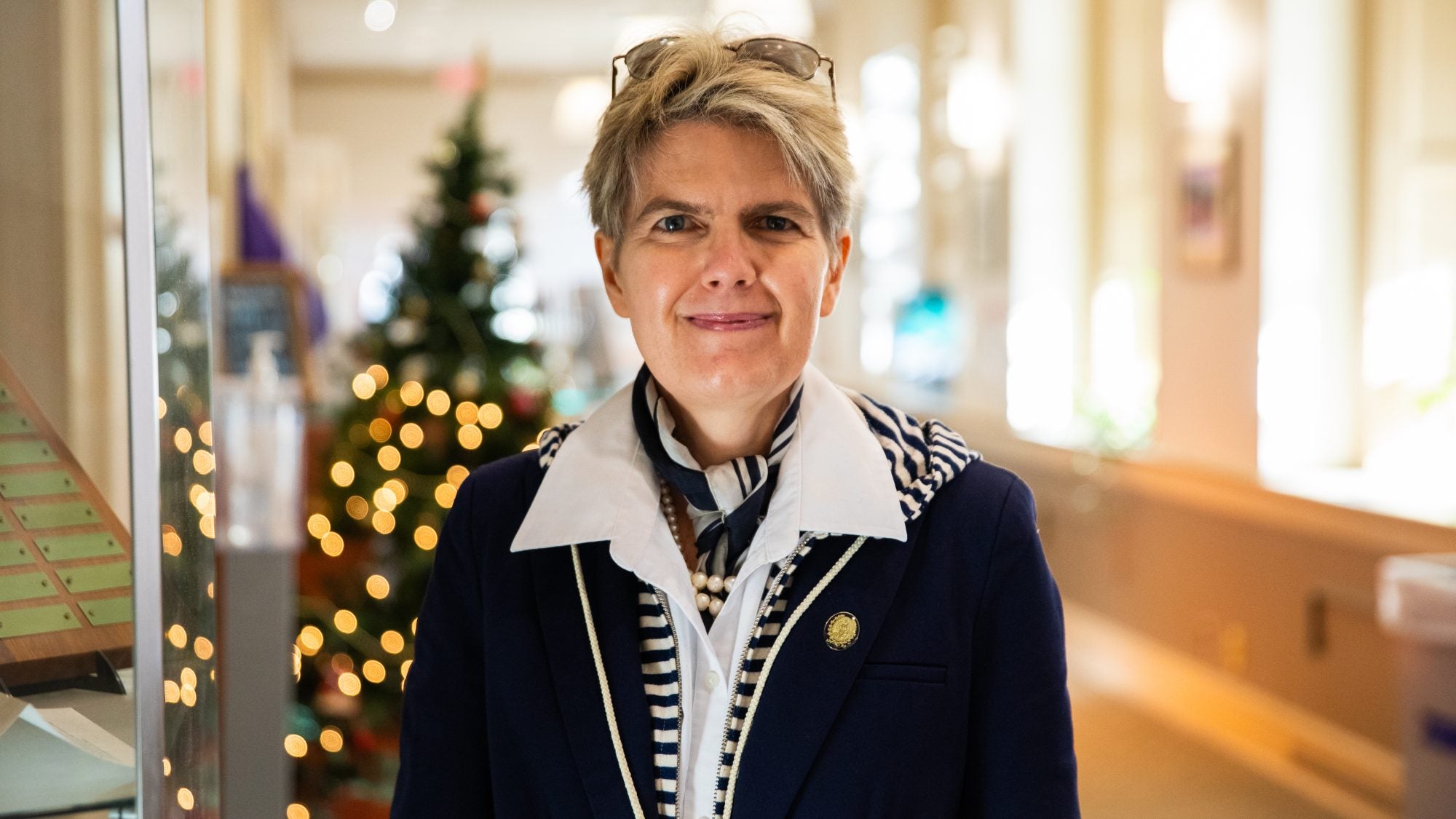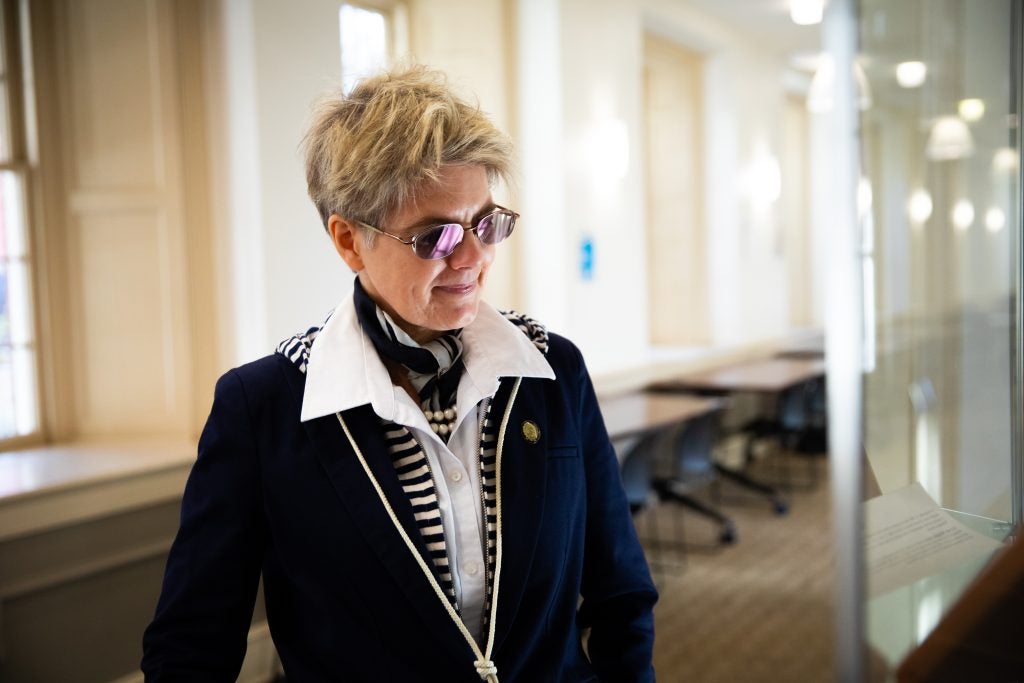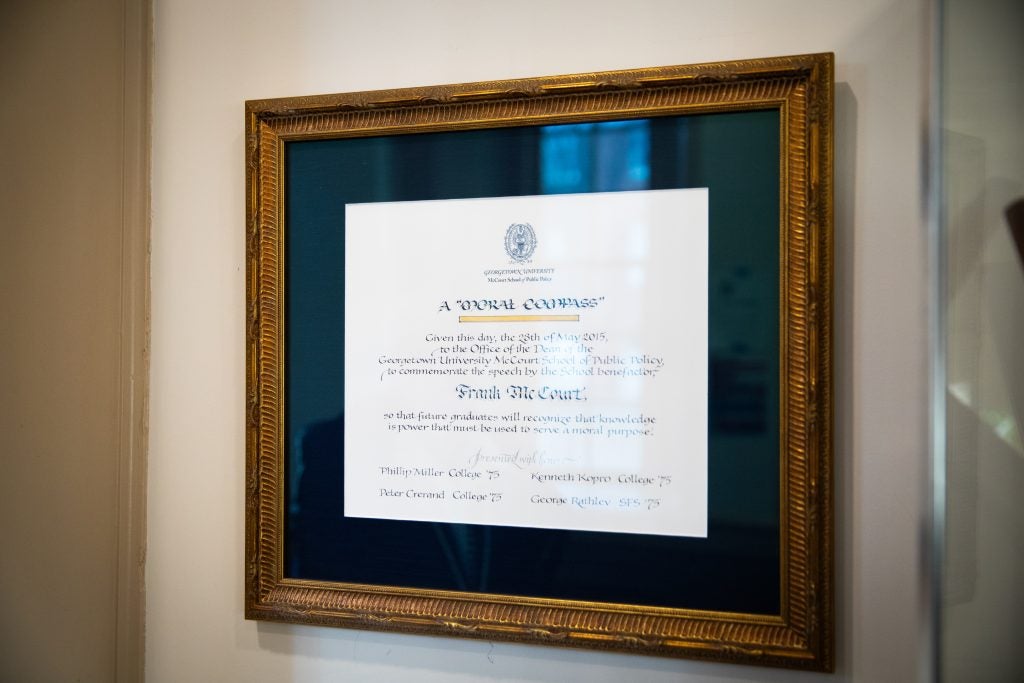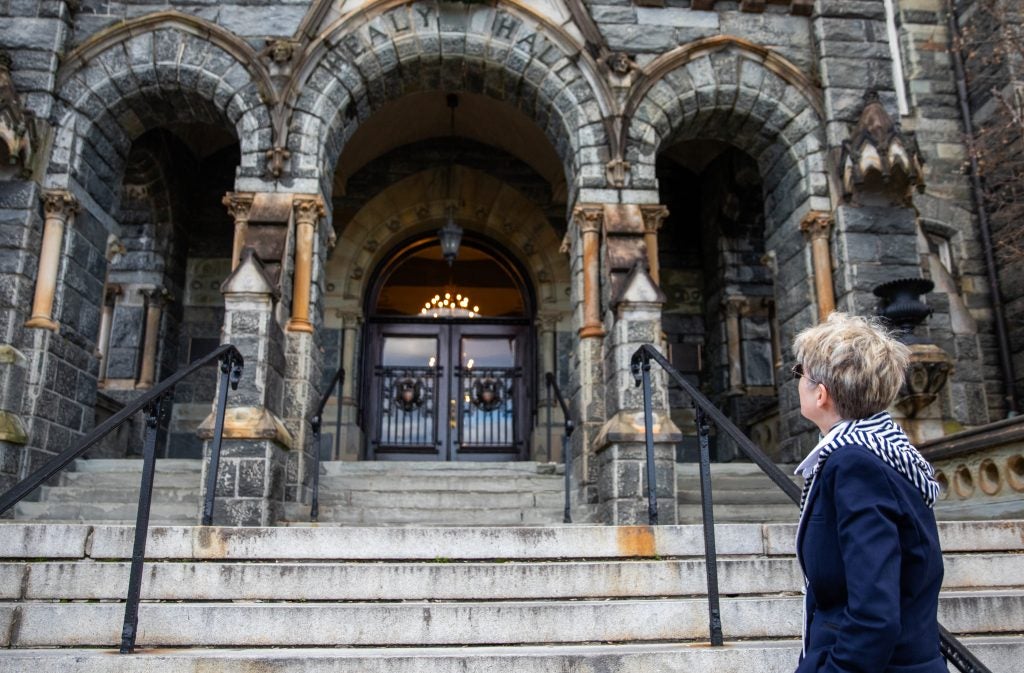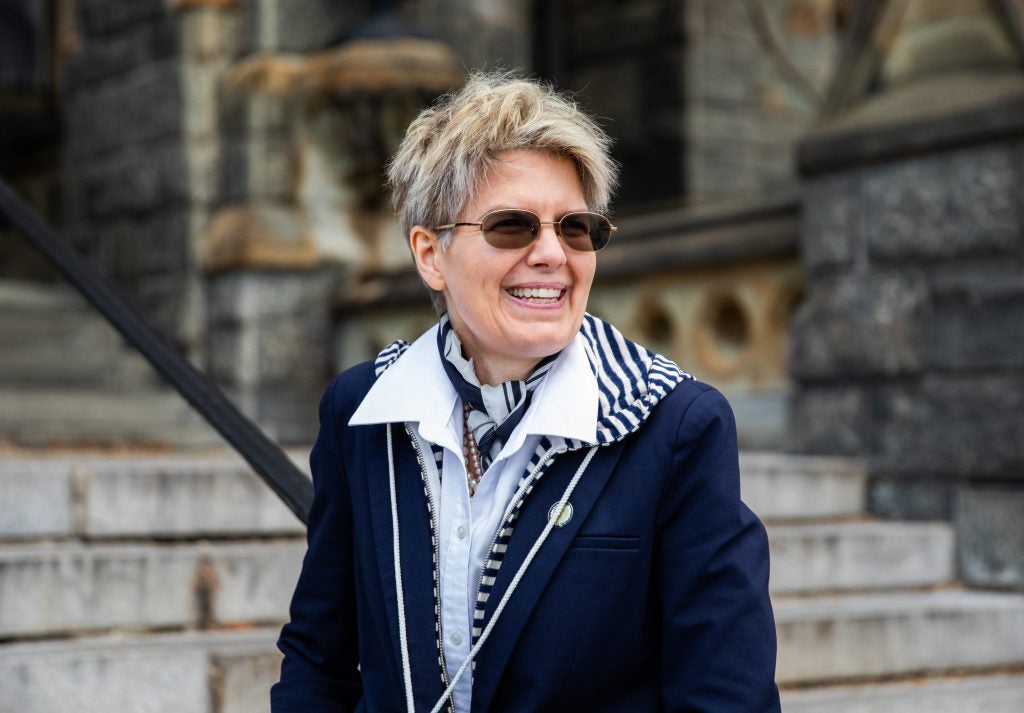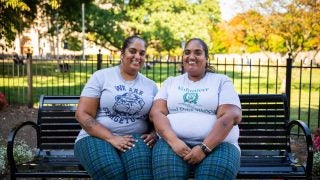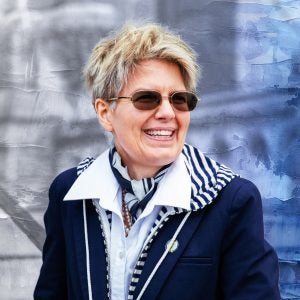 When Karen Howenstein (C’93) first came to Georgetown as an undergrad, one of the things that attracted her was the university’s mission to change the world.
When Karen Howenstein (C’93) first came to Georgetown as an undergrad, one of the things that attracted her was the university’s mission to change the world.
“That really resonated with me,” she said. “So that’s what I do at Georgetown, no matter what my job title is.”
She’s now the metrics and analytics coordinator for Cancer Research Training and Education Coordination at the Lombardi Comprehensive Cancer Center, one of many titles she’s held in her 18+ years as a staff member at Georgetown.
“I’m always sort of cresting those boundaries of the job description,” she said, “because there’s always so much more that a project could be, there are so many more people that can become engaged and can grow through their interaction.”
In her current role, she helps the Lombardi Center “lasso the numbers” on student education and training at the center, data that is used to support grant efforts and strategic decision making.
However, number-crunching is a small part of her job, she said.
“What I see myself doing is helping Georgetown create a data-centric culture and really just helping them to strengthen the infrastructure that they have surrounding data,” breaking down institutional silos in the process, she said.
Outside of work, she runs the nonprofit, GivingCar, which offers community members opportunities for giving, from monetary donations to service opportunities and fundraisers. She was inspired to found the organization after competing in and winning the Hyundai Hands On Hope Contest for Team Georgetown Lombardi in 2019’s Washington Auto Show, which helps raise awareness for pediatric cancer research. In the annual competition, participants have to keep their hands on a car for 50 hours to win the car and a $50,000 research grant for their home institution.
“I want people to have access to that gift of giving,” she explained. “Because it is a true gift to be able to give. My hope is that people who feel they have barriers to giving can find a way through the GivingCar and to give an outlet for Georgetown students to become board members and hold leadership roles in this nonprofit.”
The Wisconsin native now commutes in the car she won to Georgetown from Arlington —“three songs on the radio to Georgetown if the traffic isn’t too bad”— where she lives with her husband, who is also an alumnus and a staff member, and her daughter.
Learn more about Howenstein’s 50-hour experience in the car competition, the secret sauce that makes her a good project manager, and what has kept her at Georgetown for nearly 20 years.
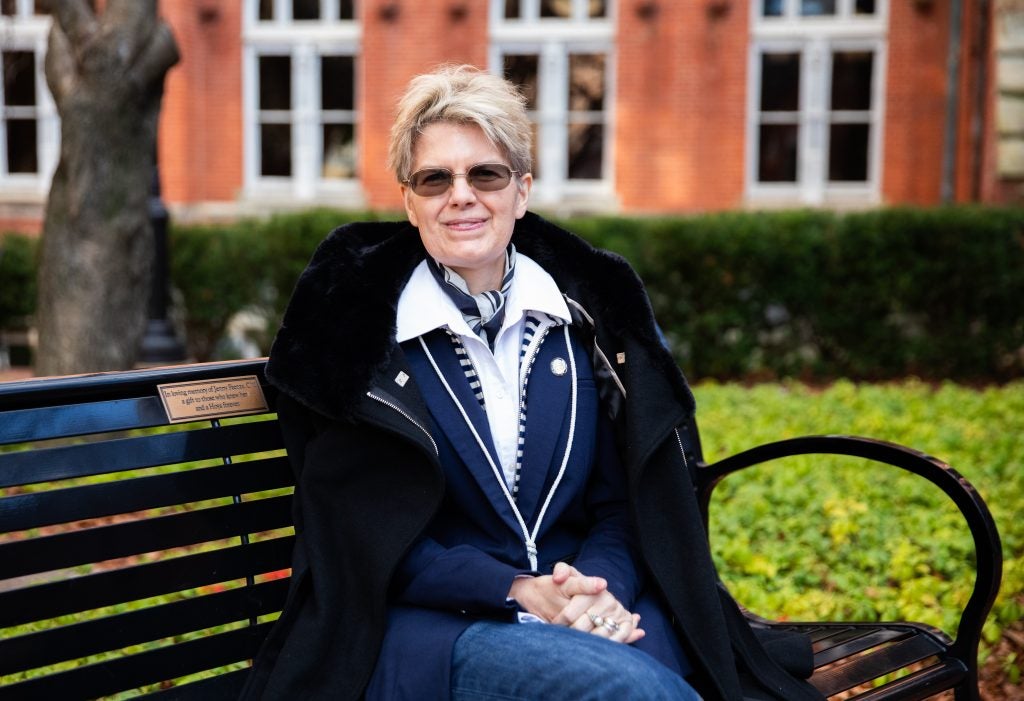
What people might be surprised to know about me: My parents have 10 natural-born children and then two adopted kids.
How my big family prepared me to be a project manager: When you have large families like that, the older ones become parental-type figures and they take care of the younger children. As the older ones leave, that responsibility passes down the line to whoever is the next oldest in the house.
So I went from being the baby with the big blue eyes to being the eldest sibling and becoming the ultimate project manager. How do you project-manage 10 loads of laundry in a matter of four hours, lining up lunches, getting people out the door — who has forms to sign, what’s for dinner? So that’s where I got my fundamental skills and practice with project management. The family had to be managed to get everybody where they needed to be with what they needed. This early practice led directly to projects at school or work and to graduate work and professional certifications in project management, technology leadership, nonprofit management, and currently, organizational leadership and portfolio management.
Why I started a nonprofit: I participated [in Hyundai’s Hands on Hope contest] because I knew there was a grant at stake. I was the oldest person — the 50-year-old on the cement floor, sleeping at night with these spring chickens, the other contestants — and we did win the grant, which I was very pleased with. But then I also got the car, which I forgot was in play. So I get the car, and it has all these handprints of these pediatric cancer survivors. I told Hyundai, I can’t … take these decals off and wad them up and throw them in the trash can. So I got the handprints put on magnets so I could preserve them. Then I started GivingCar because I want people to have access and have that gift of giving. Because it is a true gift to be able to give.
Why I kept my hands on a car for 50 hours: What kept me going was those handprints. I knew why I was there. Every one of those hands is a child who has struggled with, has defeated cancer. And every person at Georgetown — because Georgetown is very interdisciplinary, the Cancer Center is very interdisciplinary — has contributed to the wonder of those handprints on that car. So what kept me going was knowing that this was the impact and that we were going to get a grant to further research and have even greater impact. I wanted more handprints on that car.
My favorite place on campus: I like Old North — sometimes I sit on the presidential stairs there. If you go in through those doors from those stairs, there’s the “Moral Compass” in the McCourt School of Public Policy, which is very meaningful to me. And, of course, Dahlgren Chapel. And then Healy Hall — sometimes I go sit in the window sills that are below the president’s office. It’s a very quiet, very full place even when there are no people there. So those are good thinking places. The air is resounding — it’s just so full of what Georgetown is.
